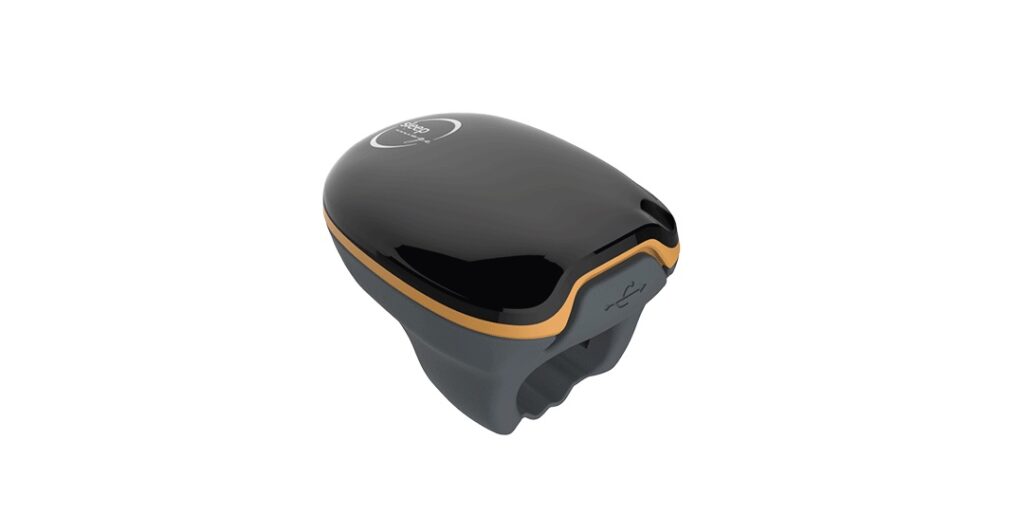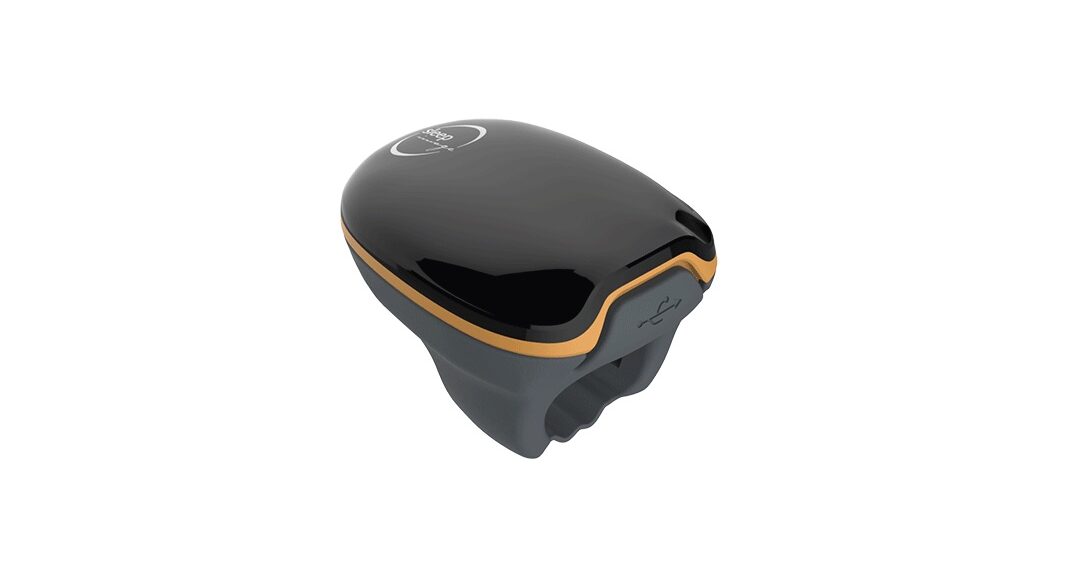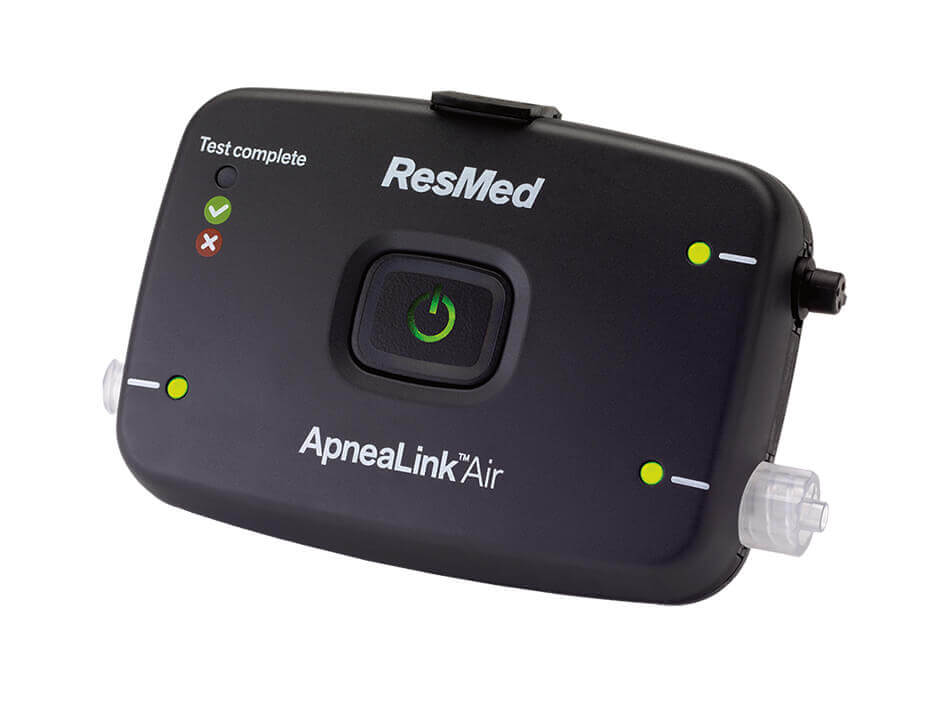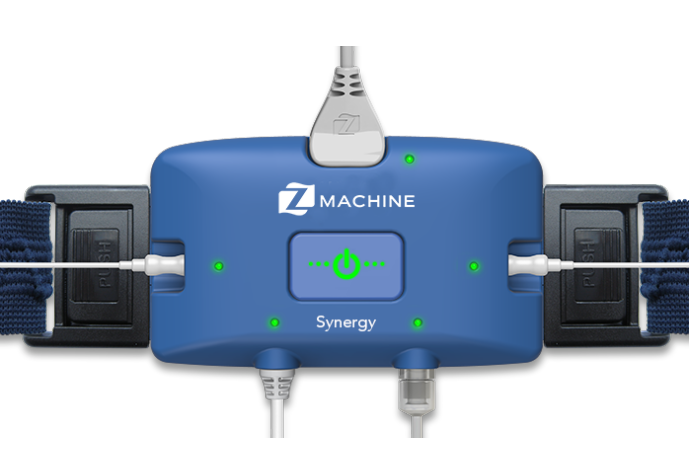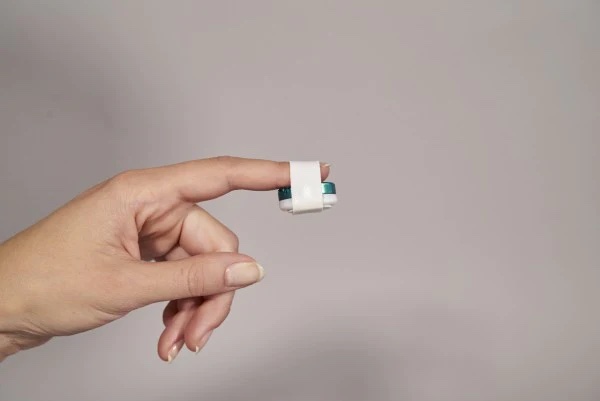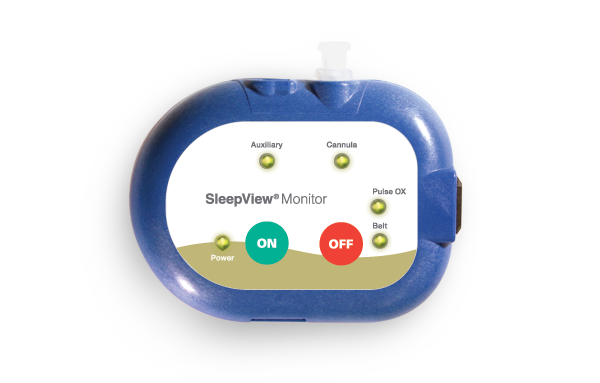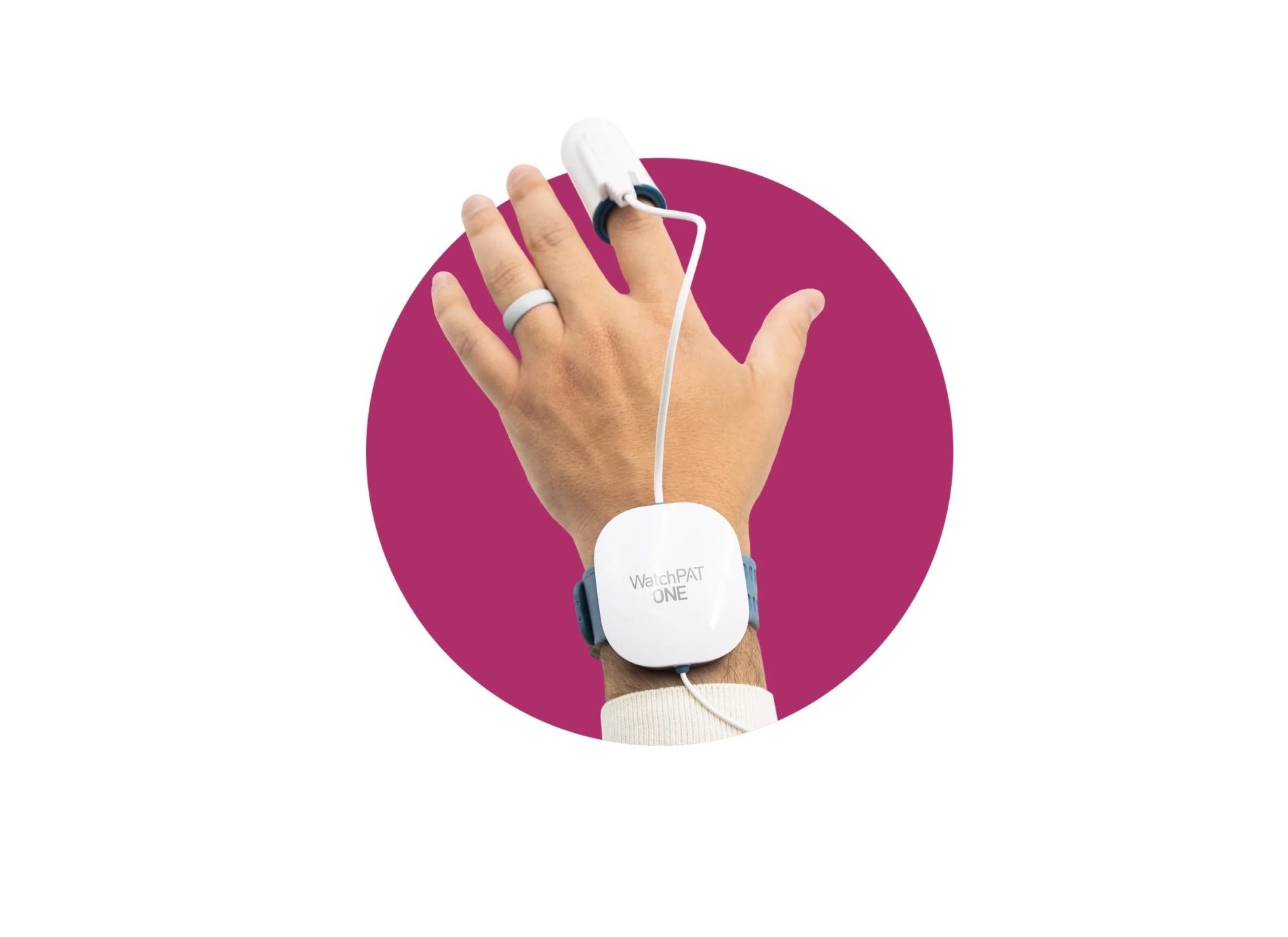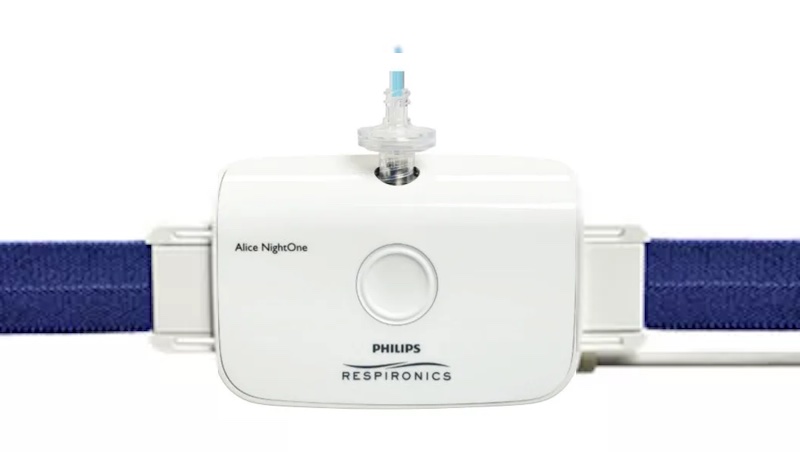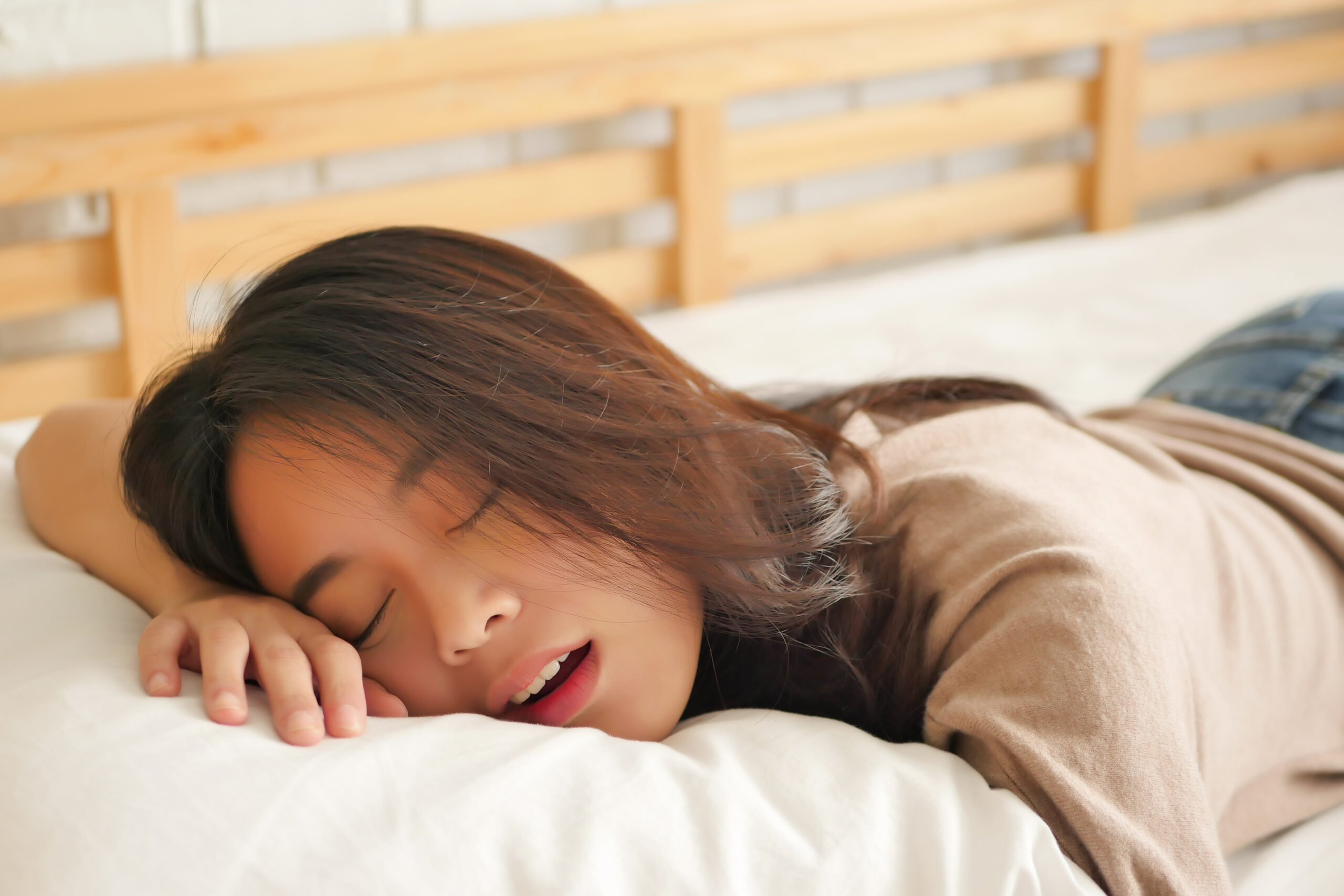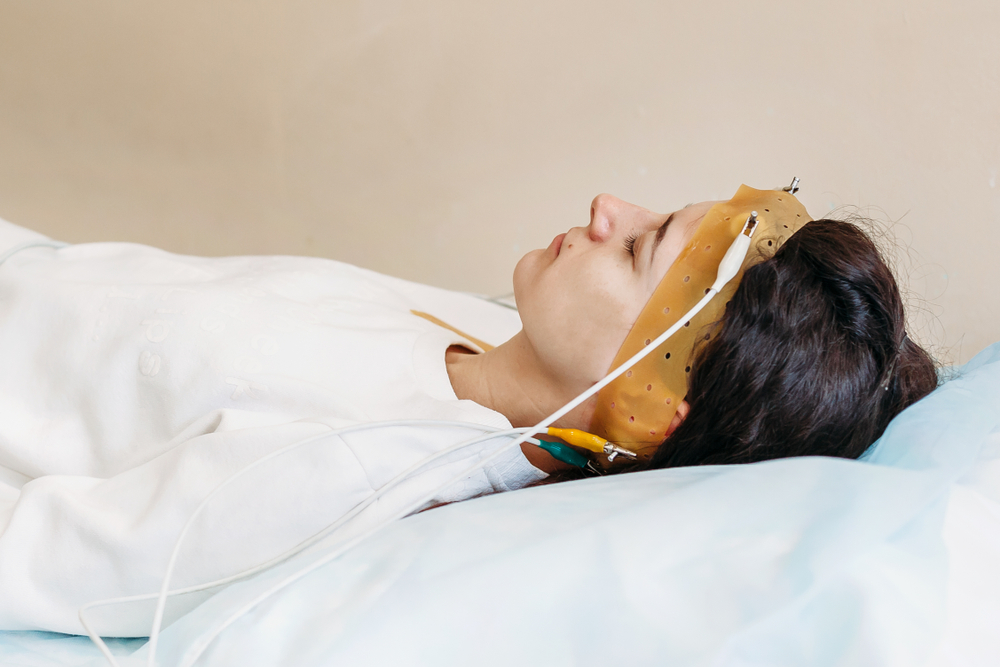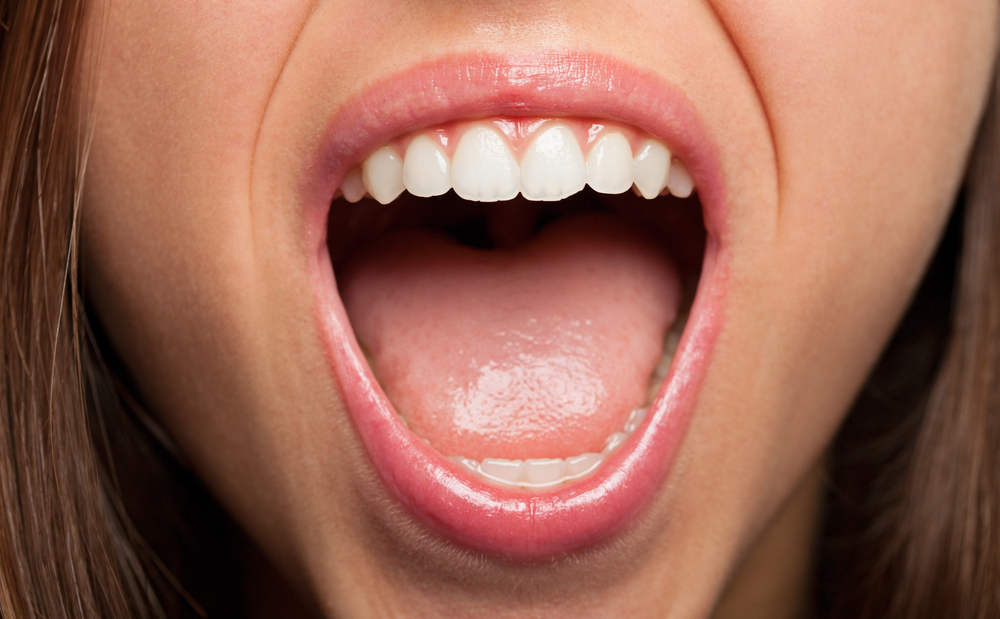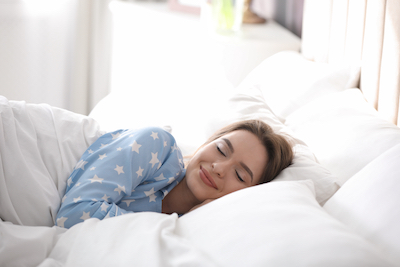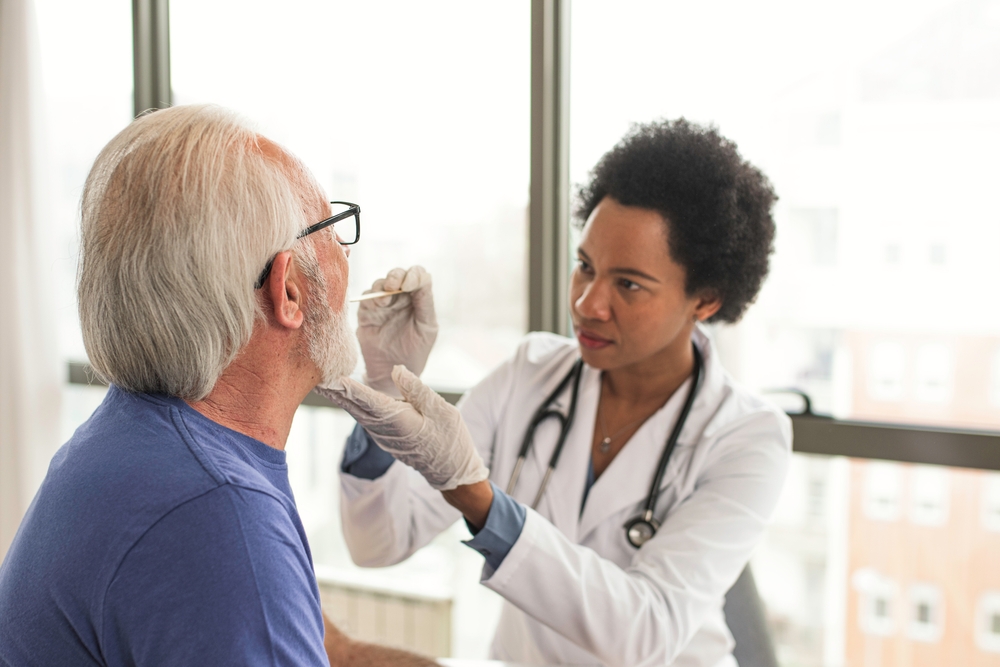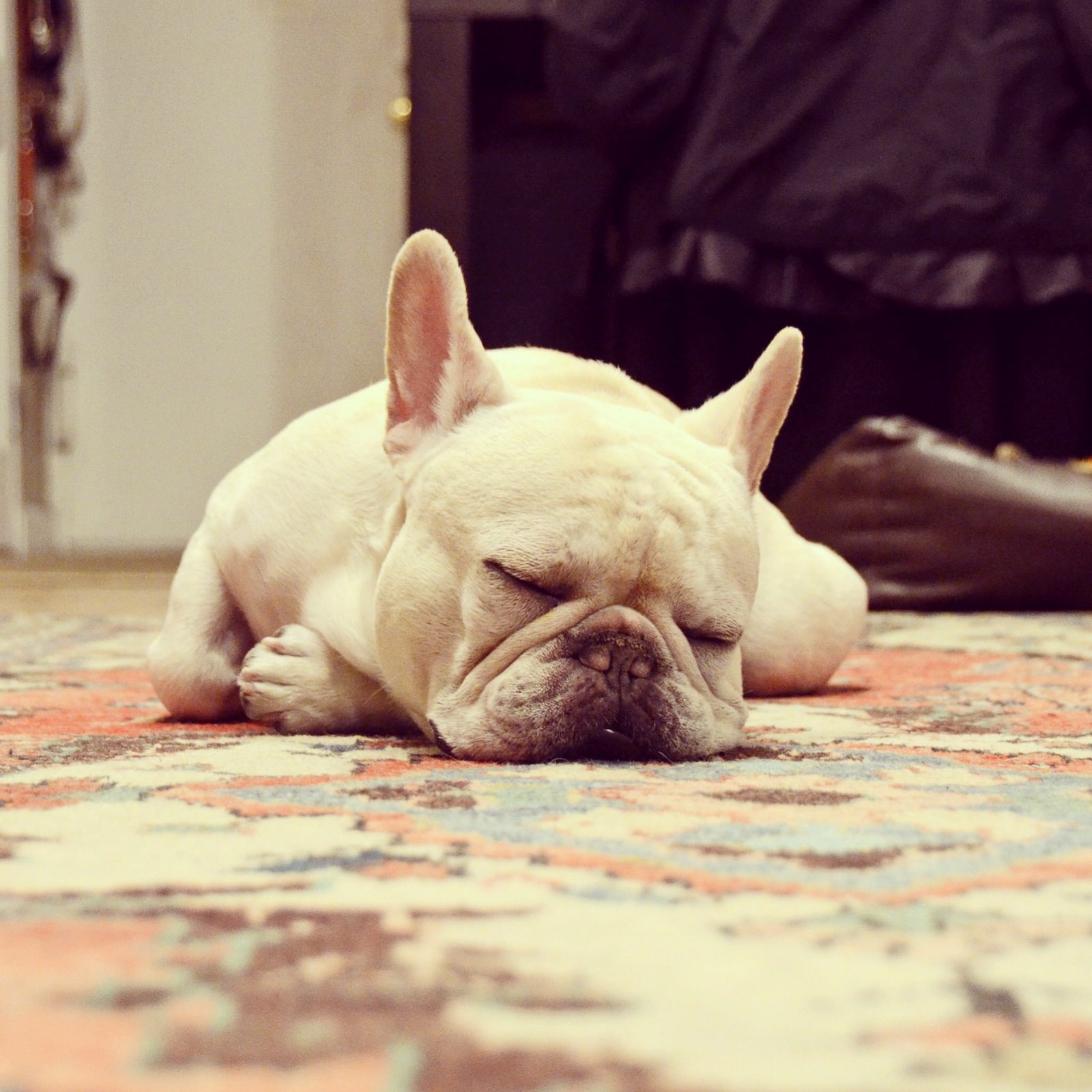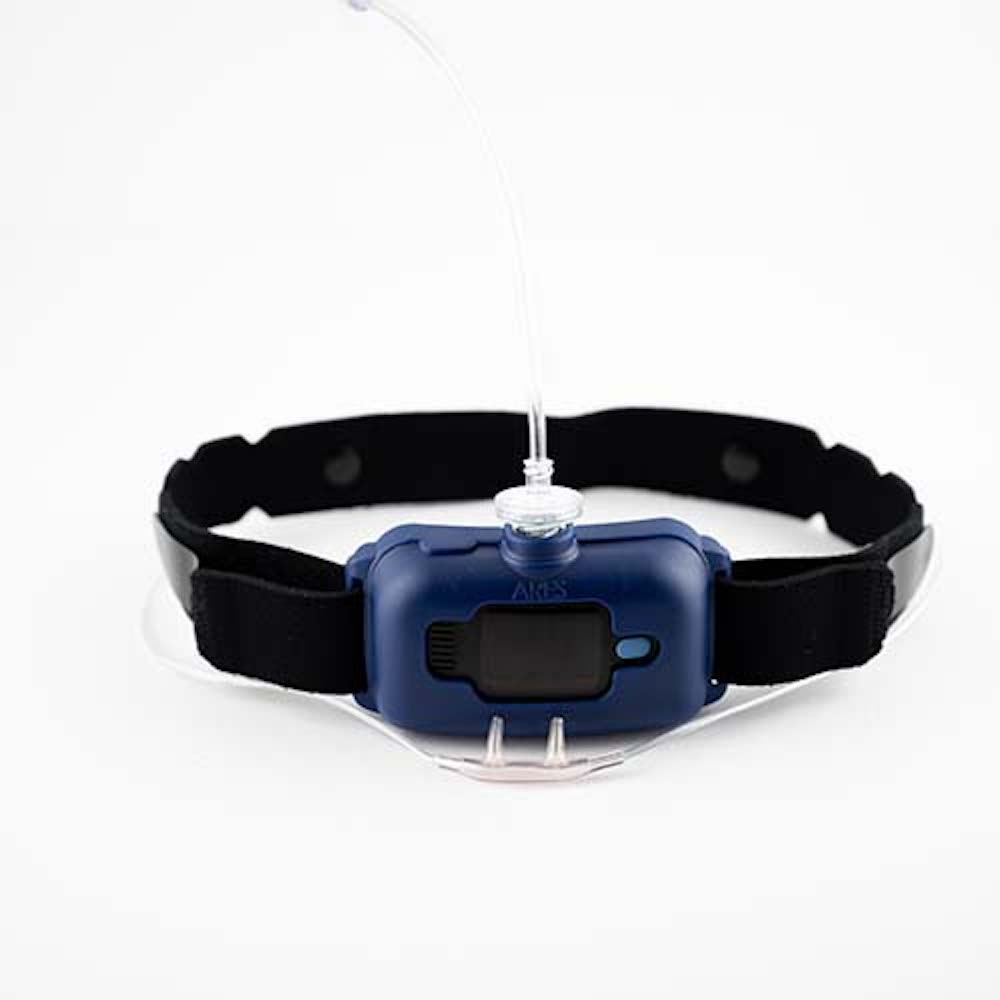Look & Feel
The SleepImage Ring is a low-profile device that collects physiological data during sleep that users can wear on any finger on their left hand. The thumb or index finger are recommended, but achieving a snug fit without being uncomfortable is important.
Ideal For
- People seeking broad information about their sleep health
- Adults and children with poor sleep quality or symptoms of sleep apnea
- Anyone who might find it difficult to sleep with multiple sensors
Who Should Keep Looking
- People who do not have access to a smartphone
- Anyone who prefers to assess their own sleep at home, rather than consulting with a doctor to use a prescription medical device
-
Price
Varies by provider
-
Test Location
Finger
Many people attend a sleep clinic for a sleep apnea diagnosis, but at-home tests like SleepImage allow individuals to perform a test while sleeping in their natural sleep environment, usually their own bed. Unlike direct-to-consumer sleep apnea tests, SleepImage is sold to health care professionals and provided to users by their doctor.
SleepImage falls into a category called Software as a Medical Device (SaMD), which the U.S. Food and Drug Administration (FDA) explains as “software intended to be used for one or more medical purposes that perform these purposes without being part of a hardware medical device.” SleepImage has been cleared by the FDA for diagnosis and management of sleep disordered breathing and can be used with several hardware devices for data acquisition of the raw physiological data, with the SleepImage Ring being the most widely used hardware device.
We will cover what you should know before using the SleepImage Ring, including how it compares to traditional sleep studies, how it works, and how to use it correctly.
Use this SleepApnea.org link for the most current discount on MyCardio products
Shop NowWhat Is Obstructive Sleep Apnea (OSA)?
People with obstructive sleep apnea (OSA) experience pauses in their breathing, called apneas, during sleep. Apneas usually occur when relaxed muscle and tissue cause a blockage or collapse of the airway.
OSA is the most common type of sleep apnea. Although the condition affects up to 15% of women and 30% of men in the U.S., it is thought to be underdiagnosed. Men, people who smoke, those with a higher body mass index (BMI), and older individuals have a higher likelihood of developing OSA.
Health care professionals use a scale called the apnea-hypopnea index (AHI) to help determine the severity of a person’s OSA. The scale measures how many apneas an individual experiences during each hour of sleep. To determine an AHI score, doctors divide the number of apnea events a person experiences by the number of hours they have slept.
| Sleep Apnea Severity | AHI Score |
|---|---|
| Mild OSA | 5-14 |
| Moderate OSA | 15-29 |
| Severe OSA | 30+ |
Signs and symptoms of OSA: Some symptoms of OSA occur during sleep, while others are noticeable during the day. OSA can significantly impact your sleep, mood, and overall health.
- Frequent nighttime awakenings
- Loud snoring, choking, gasping, or snorting
- Needing to urinate more often at night
- Morning headaches, sore throat, or dry mouth
- Poor concentration
- Mood changes and irritability
- Sexual dysfunction
- Feeling sleepy during the day
How the SleepImage Ring Detects Symptoms of Obstructive Sleep Apnea
The SleepImage Ring is easy to use and does not require many different components, making it suitable for those who prefer to have their sleep tested in their home without compromising the quality of the output.
The device measures the following six data channels:
- Plethysmogram trace
- Heart (pulse) rate
- Heart (pulse) rate variability
- Respiration
- Blood oxygenation (SpO2)
- Actigraphy
These measurements give your doctor data they can use to evaluate symptoms of sleep apnea and insomnia. The data can also be used in diagnosing sleep apnea, including differentiating between obstructive sleep apnea (OSA) and central sleep apnea (CSA).
Types of Sleep Apnea This Device Detects
After your doctor prescribes your sleep test, you will wear the SleepImage Ring while you sleep. The data will be uploaded in the morning to your doctor’s secure clinical portal in the cloud where the data is analyzed and presented for evaluation and diagnosis. While the test can distinguish between OSA and CSA, it will also show your doctor what is called periodicity, which is a physiological pattern that may indicate Cheyne-Stokes respiration identified by the test. This may result in additional testing being recommended to you.
Accuracy of Detecting Sleep Apnea Using SleepImage
The SleepImage System uses a technology called cardiopulmonary coupling (CPC) that doctors can use to diagnose OSA and CSA in both adults and children over the age of 2. It has been widely studied and published in over 100 clinical publications and extensively compared against output from polysomnography.
Sleep varies from night to night, and user error can cause the signal to drop, leading to data loss that can affect the test’s accuracy. Depending on your symptoms and clinical presentation of sleep apnea, your doctor may request you to take the sleep test over two or more nights, or request an additional sleep study in a sleep center.
SleepImage Ring vs. In-Lab Sleep Studies
Your doctor will determine whether a home-based study is appropriate for you. However, SleepImage is cleared by the FDA to have output for diagnosis of sleep disordered breathing as comparable to output from an in-lab sleep study using polysomnography (PSG).
While in-lab sleep studies offer benefits like accuracy, many people choose at-home tests for the ability to conduct more than one test simultaneously, convenience and cost.
| SleepImage Ring | In-Lab Sleep Study |
|---|---|
Benefits:
| Benefits:
|
Limitations:
| Limitations:
|
Does the SleepImage Ring Replace a CPAP Titration Study?
If your doctor diagnoses you with OSA or CSA following a SleepImage study using the SleepImage Ring, you may still need to attend a continuous positive airway pressure (CPAP) titration study at a sleep clinic. CPAP therapy, which uses pressurized air to keep the airway open during sleep, is the most effective treatment for OSA. A CPAP titration study is used to determine the best air pressure level for a person’s needs.
Is This At-Home Sleep Apnea Test FDA Cleared?
The SleepImage System is cleared by the FDA to aid in the diagnosis and management of sleep apnea in adults and children.
What You Need to Know About the SleepImage Ring
The SleepImage Ring is a finger sensor that is used to collect data for analysis. Data from the sensor is sent to your health care team via the SleepImage mobile app on your smartphone, which is also used to start and stop the test. Your doctor will use the cloud-based SleepImage System SaMD to determine if you have sleep apnea.
The SleepImage Ring is usually provided to users by a medical professional and is not available for purchase by individuals. The ring is rechargeable and reusable and does not require any consumables.
We’ll walk you through the process of using the SleepImage Ring, including its components and how to set up the smartphone mobile app.
What Comes With It
The SleepImage Ring is a sensor that users wear on their finger, preferably the thumb or index finger on their left hand. The ring should have a snug fit without being uncomfortable. It pairs with the SleepImage smartphone mobile app and it comes with a charging cable. Make sure to charge the ring prior to each nightly study if you have been prescribed a multi-night study.
Components:
Technical Specifications
SleepImage tracks six channels of data, collected by the non-invasive finger sensor. Because of this streamlined design, the Ring’s setup is significantly easier than many similar at-home sleep apnea tests.
Information from the SleepImage System can be used to differentiate between OSA and CSA. Cheyne-Stokes respiration presents similarly on the SleepImage spectrogram.
While the SleepImage Ring can record up to 16 hours of data on a single charge, the manufacturer suggests that users charge it fully before each night they plan to test.
Features:
- Single sensor worn on the finger
- Six channels of data: plethysmogram, heart (pulse) rate, heart (pulse) rate variability, respiration, blood oxygenation (SpO2), movement (actigraphy)
- Can distinguish between OSA and CSA
- FDA-cleared for use by adults and children over the age of 2
- Rechargeable and reusable
- Smartphone app automatically uploads data to your health team’s account on the cloud-based SleepImage System Software as a Medical Device, where the recorded data is analyzed and a report is generated
- Up to 16 hours of recording time on one charge
How to Use This Device
The SleepImage smartphone app provides instructions on pairing the ring to the smartphone over Bluetooth and setting up your patient profile in the app to upload the data. If you have questions about setting up or using the device or the mobile app, your health care provider can offer advice and help troubleshoot any issues.
Step 1:
Download the SleepImage smartphone app through the Apple App Store or Google Play. Your smartphone should be fully charged and remain in the same room for the duration of the test. It is recommended to refrain from using any other apps or Bluetooth devices while conducting the SleepImage test.
Step 2:
After downloading the app, sign in using the patient ID provided by your healthcare provider.
Step 3:
The SleepImage Ring turns on automatically when you slide it onto your finger. Place the ring on a finger of your left hand where it feels snug but not uncomfortable. The thumb or index finger are recommended. Poor fit can cause discomfort or inconclusive results.
Step 4:
Make sure your phone’s Bluetooth setting is turned on and only use the SleepImage app to connect to the ring. Do not pair it in the Bluetooth settings on your phone. To start the pairing, look for a discovered device in the app after you put the ring on your finger and select “Connect” to pair the ring to your smartphone.
Step 5:
Press the green arrow on the app to start the test. Make sure to keep the app open and the phone near where you sleep and connected to power during the sleep study.
Step 6:
Complete the test in the morning by pressing the red button on the app.
Sleep Data Results and Diagnosis
The SleepImage Ring streams data continuously to your smartphone during your sleep using Bluetooth. It is therefore important that you keep your phone in the same room in Bluetooth proximity during your sleep. The SleepImage smartphone app stores the data during the sleep study. When you stop the study in the app, the data is automatically uploaded to the account of your health care provider in the SleepImage cloud-based software. It is then automatically analyzed for your doctor to interpret. Your doctor can also review the raw data and manually re-score if needed for sleep apnea diagnosis.
Depending on your healthcare provider, you may receive your test results over the phone or at a follow-up appointment. If you are concerned about the turnaround time for your results, it may be worth inquiring about the timeline during your initial consultation.
Use this SleepApnea.org link for the most current discount on SleepImage products
Shop NowWhat Do Customers Have to Say About the SleepImage Ring?
Most users report that the SleepImage Ring is comfortable, extremely easy to use, and allows them to sleep normally thanks to its low profile. They also note that the app is easy to pair with the device and that they experienced relatively quick turnaround time for their results.
Others found that the ring slipped off during the night, requiring a second night of testing.
Warranty and Shipping Policies
| Availability | SleepImage is only available through health care professionals. Those interested in using SleepImage for their sleep apnea diagnosis will need to find a medical professional who offers the device. |
| Shipping | Shipping times and costs will vary based on your specific provider. As the SleepImage Ring is a reusable device, it must be returned to your health care provider after your testing is complete. |
| Warranty | SleepImage offers a warranty for the Ring to the clinical practice that owns the ring. Please consult with your health care provider what liability you may have while you have the ring in your possession to take the test. |
Medical Disclaimer: This content is for informational purposes and does not constitute medical advice. Please consult a health care provider prior to starting a new treatment or making changes to your treatment plan.
Still have questions?
Sleep apnea products can be confusing. If you need individualized assistance, send us an email at [email protected] with your questions and we'll help find the best fit for you.


